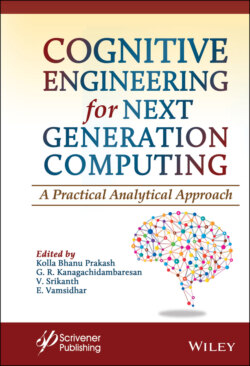Читать книгу Cognitive Engineering for Next Generation Computing - Группа авторов - Страница 41
1.10.1 Supervised Learning
ОглавлениеIt is a machine learning task of inferring function from labeled data. The model relies on pre-labeled data that contains the correct label for each input as shown in Figure 1.9. A supervised algorithm analyses the training example and produce an inferred function that can be used for mapping new examples. It is like learning with a teacher. The training data set is considered as a teacher. The teacher gives good examples for the student to memorize, and guide the student to derive general rules from these specific examples.
Figure 1.9 Supervised model.
In the Supervised learning technique, an algorithm learns from historical data and the related target labels which may consist of numeric values or string, as classes. And the trained model predicts the correct label when given with new examples.
The supervised approach is generally similar to human learning under the supervision of a teacher. There is a need to distinguish between regression problems, whose target is a numeric value, and classification problems, whose target is a qualitative variable, such as a class or a tag. A regression task determines the average prices of houses in the Boston area, and a classification task distinguishes between kinds of iris flowers based on their sepal and petal measures. A supervised strategy maps the data inputs and models them against desired outputs.
The supervised learning technique can be further divided into regression and classification problems.
Classification: In the classification problem, the output variable is a category, such as “red” or “blue” or “disease” and “no disease”. Classification emails into ‘spam’ or ‘not spam’ is another example.
Regression: In the regression problem, the output variable is a real value, such as “price” or “weight” or “sales”.
Some famous examples of supervised machine learning algorithms are:
SVM, Bayes, KNN, Random forest, Neural networks, Linear regression, Decision tree, etc.
